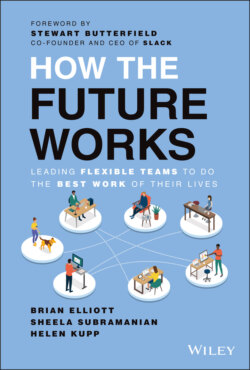Читать книгу How the Future Works - Brian Elliott - Страница 16
2) Engage Employees
ОглавлениеEvery year Gallup conducts their State of the Global Workplace report, and every year it points to the same problem: a majority of employees are either not engaged or actively disengaged at work. It's an area where most companies are continually looking to improve because disengagement is expensive.8 But there is something that has been shown to have a positive impact: flexible work. Before the pandemic employees with at least some flexibility had the highest levels of engagement according to Gallup. That percentage actually rose to its highest point in 2020,9 despite all the disruptions that the pandemic brought, and the flexible work models that were imposed on companies were likely a big part of that.
One of the ways in which flexibility engages people is through inclusion, by making it easier for all kinds of people to participate and feel valued. Flexible work has the advantage of benefiting and supporting those who are commonly left out or sidelined in traditional work structures, which includes groups who have been historically discriminated against (as we'll outline in greater detail later in the book). Flexibility also benefits others who don't fit well into typical corporate structures. For example, Helen finds that flexible work better suits her introverted personality. Remote workers and those in satellite offices are more examples of groups that have traditionally been left behind. Their inability to participate fully in team events or meetings have left many feeling like second-class citizens. But when your meeting takes place in a digital space, everyone has an equal opportunity to participate. These are just a few examples, but there are many more ways in which individual employees can get left out, not because of the quality of their work or ideas, but because of things that should be far less important—like what they look like, how loudly they speak, or where they're located. Flexible work allows companies to intentionally design formats for collaborating, creating, and innovating that are a better fit for all their people.
Flexible work can also lead to better creativity and innovation, even though leaders often express concerns that it will inhibit these things that are so crucial to growth. Future Forum research shows this concern is a myth, and in fact where people work has little bearing on how creative their team is (more on this in Step 5). To give one example, there's a persistent myth that the best method is to gather people in a room and brainstorm your way to new ideas. Companies have been doing this for decades, but countless studies have shown that this approach is a waste of time, at best; at worst it can lead to the dreaded groupthink and even harm productivity.10
